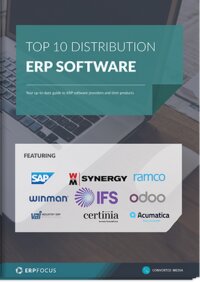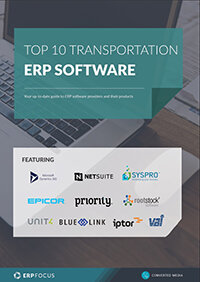Next generation IT: finding the right ERP landscape for global trade and logistics
Cloud computing is the way of the future. More and more software providers are offering cloud solutions, including both private and shared options. Businesses are also rapidly embracing this type of solution model.
While cloud solutions are still deployed primarily in isolated fields of application, more and more IT managers are also taking a critical look at their ERP systems. Cloud applications can support certain functions efficiently and are easy and convenient to use. Businesses are increasingly weighing options “in the cloud”, particularly in response to structural changes in the IT system environment through, for example, mergers & acquisitions or consolidations, strong growth, high ongoing IT expenses, or increasingly complex functional requirements.
The advent of S/4HANA
The idea of SAP S/4HANA® as the next phase in the evolution of ERP systems has, for many SAP-using companies, been the trigger to start this thought process. SAP customers contemplating how they might benefit from the new S/4HANA or what effect it may have on their current operations and processes may soon find themselves reassessing their current IT setup in its entirety.
Find the right software for your company using our step-by-step guide to selecting distribution ERP
One of the first questions they will face is: which data and solutions should be moved to the cloud? What are the costs and benefits? Many businesses opt for caution and rely exclusively on standardised data and solutions in the cloud. A more efficient approach, however, is to use the cloud for those solutions that are subject to dynamic change and generate high operational and maintenance expenses.
This includes the area of global trade, where customs and export management are impacted by international conventions, regulations, and laws. The resulting frequent adjustments are expensive for a business as they require staff with expertise in global trade and regular software updates. The same is true of logistics, where the trend is toward collaboration among shippers, logistics service providers, and recipients – including IT integration.
Can on-premise and cloud solutions work together?
But is it worth extending on-premise solutions with cloud applications? One of the most important aspects here is the total cost of implementing the required functionalities within the core system compared to investing in a hybrid solution landscape. Hybrid system environments are often significantly less expensive than on-premise solutions. Companies should use the following five criteria when it comes to making a decision:
- Total cost of ownership
- Integration into the system environment
- Functionality and usability
- Service and expertise of provider
- Data privacy and security
If the deployment of cloud-based applications offers cost advantages, will the company gain better functionality and benefit from the provider’s expertise?
Some critical questions to keep in mind: How will the criteria be weighted for each deployment scenario? Which criterion is most important for my specific application? And are there criteria that would disqualify a particular selection?
Decision-makers should not just focus on current requirements, of course. It’s also important to take into account the company’s potential future developments, so that the solution continues to provide optimal support going forward.
The question of which solutions can provide the most momentum to innovative business models also harbours an opportunity for IT to make a significant impact on the company’s development. And an ultimate success factor that has a proven track record in the process is: get everyone on board! All involved teams and stakeholders. Engage in an in-depth dialog with relevant departments and keep the communication channels open to all project partners – internal and external.
More information can be found in AEB’s fact sheet “Optimized SAP® Systems in Global Trade and Logistics”. It can be downloaded free of charge here.
Free white paper

7 steps to selecting distribution ERP
Get expert advice on distribution ERP selection and requirements analysis

Featured white papers
-

Top 10 Distribution Software Comparison
Compare the best distribution ERP systems available today
Download -

Top 10 Transportation ERP Software Comparison
Get your free comparison of the top 10 transportation ERPs
Download -

7 steps to selecting distribution ERP
Get expert advice on distribution ERP selection and requirements analysis
Download
Related articles
-

ERP for Food Distributors: Key Functionality
In a modern world where products are tailored to consumers, why should ERP for food distributors ...
-

CMMC Compliance: What Aerospace and Defense Manufacturers Need to Know
Key insights on CMMC compliance, deadlines, and securing DoD contracts with CMMC 2.0 certificatio...
-

ERP & Logistics: Optimizing the Supply Chain
Read about the steps you can take to optimize your supply chain through ERP software logistics ma...

